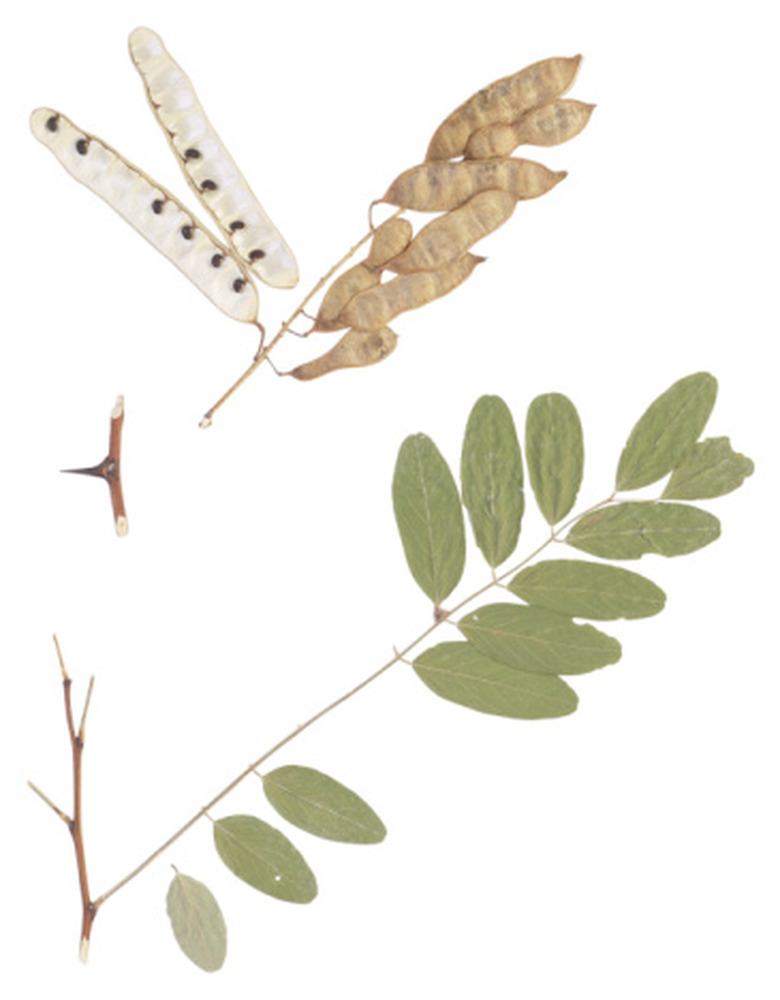Why Is My Locust Tree Turning Yellow?
Locust is an encompassing term used for both black locust and honey locust, related members of the pea family. These plants are known for their foliage, amongst other characteristics, which consists of tiny leaflets. Locusts naturally turn yellow in fall prior to losing their leaves — this is not a cause for concern. However, if locust tree leaves or individual leaflets are turning yellow before fall, the color change could indicate a reaction to dry weather, a pest problem or a nutrient deficiency.
Hot, Dry Weather
High temperatures and low moisture conditions may cause locust leaves to turn yellow and drop. Trees naturally respond to limited water by dropping leaves to conserve water. This is enhanced if the hot, dry weather was preceded by a cool, wet spring or late cold spells. As long as there are no symptoms of insect infestation or disease and the tree is being supplied with adequate water this condition is not serious. However, water stress will make a tree more susceptible to many pests.
Aphids
Aphids are a common pest of locust trees that will cause a yellowing of leaves. Inspect the bottom of the leaves where aphids feed. Aphids also excrete a sticky substance known as honeydew that can be found on and around the tree. As long as the tree is otherwise healthy, aphids will not severely damage the locust and natural predators will control the population. Otherwise, the aphids may be successfully blasted from lower branches of small trees with a strong spray of water. If necessary, aphids can be treated with an insecticide.
Honeylocust Spider Mites
Honeylocust spider mite damage first causes the upper surface of leaves to appear stippled yellow or white. A severe infestation can eventually cause all of a tree's foliage to turn brown and die. Adult female mites overwinter in bark cracks, and mites can be found throughout the year on leaflets. Although damage is usually only aesthetic, large populations can be addressed with a dormant oil spray in the winter or an oil, soap spray or miticide treatment at other times. Conventional pesticides may destroy natural mite predators and should not be used.
Honeylocust Plant Bugs and Leafhoppers
Honeylocust plant bugs, known scientifically as Diaphnocoris chlorionis, use needle-like mouth-parts to feed on plant tissue. Leaflets where they feed become yellowed and distorted. Seriously affected trees usually produce new leaves later in the growing season but may maintain a tattered appearance. Leafhoppers cause similar damage. Neither of these pests will generally cause serious problems for the tree, but attractiveness and vigor may be affected, so trees should be given adequate water and fertilizer to avoid further stress. Insecticides can be used early to control the insects.
Nutrient Deficiencies
If any or multiple nutrients are not available to the locust in an adequate amount, leaves may turn yellow. Yellowing, which is typically accompanied by more indicative symptoms depending on the lacking nutrient, can occur if nitrogen, phosphorus, potassium, calcium, magnesium, sulfur, iron, manganese or molybdenum are insufficient. Generally, nutrient deficiencies can be corrected with proper fertilization, but a soil test should be conducted to determine the exact problem and whether the pH should be adjusted.
